Fall Tillage Considerations
Tillage is a popular practice across Illinois and it still seems to have its place in a high yield soybean production system. It also simplifies decisions that no-tillers must consider such as handling residue, cooler and wetter soils the spring and more potential for seedling diseases and nutrient tie up. Farmers know that tillage provides two main benefits: It blackens and loosens the soil in the fall so it dries and warms more quickly in the spring. In heavier soils in central and northern Illinois and tighter clay soils in the south, tillage can help guarantee a good stand [...]
New Insights into Nitrogen Fixation
Nitrogen is a key ingredient in soybean production, how does it help the plant. As a legume, Bradyrhizobium bacteria infect a root of a soybean plant and the plant builds nodules to house them. A community of rhizobia in the nodule grab nitrogen (N) from the soil and “fix it” into a form that a plant can use. The plant in turn feeds the microbes—this is not in dispute. However, the amount of nitrogen fixed is estimated to be enough for 50-bushel soybeans, with the rest coming from the soil. With the pursuit of 80, 90 or 100 bushels, [...]
Post Season Soybean Evaluation
Well, most soybean fields have been harvested and it probably felt good to combine that last acre for the season. But your work isn’t over yet. As harvest ends and fall work slows down, take the time to evaluate how soybeans did overall and in individual fields. And do this before making your final soybean variety placement decisions for next season. Mastering soybean production to produce consistently high yields is about understanding limitations, fine-tuning management and adopting the newest proven practices. And soybeans do respond to management just like corn, but it are more fickle and you need to [...]
Dust – A Soy-Based Talc, Graphite Replacement
If you plant corn or soybeans you are either adding talc, graphite or Fluency Agent Advanced from Bayer Crop Science, as a lubricant. Talc is dusty, white, chalk-like material that poses a health risk if inhaled and graphite is a dusty, black, soot-like material—both are routinely available from your equipment dealers. Fluency Agent Advanced is also a seed lubricant that improves planter performance while reducing the amount of dust potentially released during planting. It is an alternative to talc, graphite and talc/graphite-blended seed lubricants. Each product reduces static friction between individual seeds and materials they touch, improving flow and [...]
Sampling SCN Population in the Fall
Soybean cyst nematode (SCN) is considered the No. 1 pest threat to soybeans and robs more bushels than any other threat. And unfortunately, many of those bushels are lost without ever seeing any above ground symptoms. The challenges are that 1.) SCN can probably be found in every soybean-producing county in Illinois and across the Corn Belt and 2.) traditional practices of rotating soybeans regularly with corn and planting resistant varieties isn’t as effective in keep egg counts low. Knowing where SCN egg counts are high and how high they are is the key to effective control. That is [...]
Planting Wheat in Your Double-Crop Rotation
In an issue of the Cool Bean Advisor newsletter, University of Wisconsin wheat and soybean specialist Shawn Conley shared his top winter wheat establishment recommendations. They include: Variety selection matters. Plant new seed (DO NOT plant saved seed). A fungicide seed treatment is recommended for winter wheat, especially for seed damaged by Fusarium head blight (FHB). Wheat should be planted 1 to 1.5 inches deep. The target seeding rate for wheat planted from September 15th to October 1st is 1,300,000 to 1,750,000 seeds per acre. The optimal seeding rate for wheat planted after October 1st should be incrementally increased [...]
Estimating Soybean Yield
It has been a pretty good year for corn and soybeans across the Corn Belt and many of you may be wondering about your potential crop yields. For corn, the yield component method is a pretty good indicator of yield and if you do enough subsamples in a field you will get a pretty good idea. However, soybean yield is notoriously difficult to predict even though the math seems fairly simple: plants per acre x pods per plant x seeds per pod x weight per seed and then convert that value to bushels. If it works for corn it [...]
Reaching for 100
The Illinois Soybean Association has been sponsoring the Yield Challenge since 2010. The contest allows growers to compete for the highest soybean yield and greatest yield gain. And many of the entrants are “going for 100” in an attempt to break the 100-bushel ceiling. Every summer we showcase some of the practices that a few growers are using to reach 100 bushels or record a personal best. It is always exciting to learn what these growers are doing, whom they are getting advice from and their passion for growing high-yield soybeans. There is a lot to learn from their [...]
The Nitrogen Question
The research and debate on applying supplemental nitrogen (N) on soybeans continues. The ILSoyAdvisor has posted its share of articles on the topic and I have written my portion to answer that question. There is no clear answer and just applying nitrogen can be costly with an added risk of adding more nitrogen to the groundwater—two negatives. After studying the topic for five years and listening to many viewpoints it is hard for me to recommend supplemental nitrogen because of three unknowns: yield potential, nitrogen fixation level and the soil’s nitrogen mineralization output. Soybeans require 4 – 5 lbs. [...]
Dwarf Beans Anyone?
Growers want tall soybeans that canopy over the row and have lots of nodes and a few lower branches to produce a lot of pods. Plant these same varieties in Illinois prairie soils and they grow 5 feet tall and begin to lodge with some corresponding yield loss. And the varieties we grow today were largely developed and tested under 30-inch row spacing and still perform best in that 20- to 30-inch spacing. Dr. Richard Cooper, retired soybean breeder who worked both at the University of Illinois and then at The Ohio State University, has long advocated growing dwarf [...]

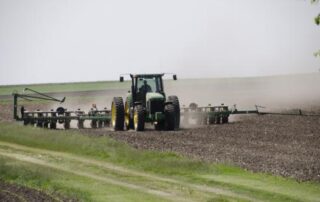
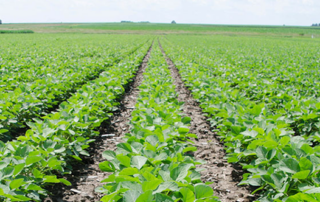
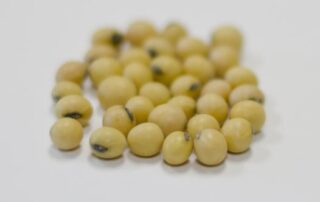
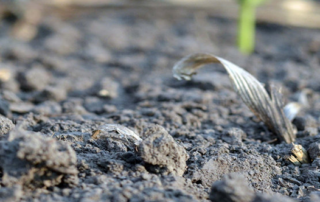
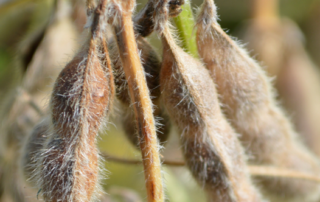
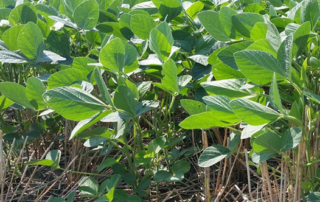
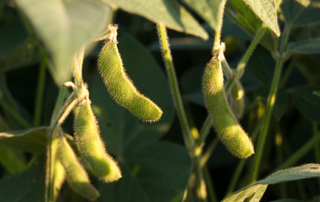
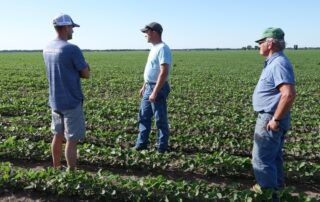
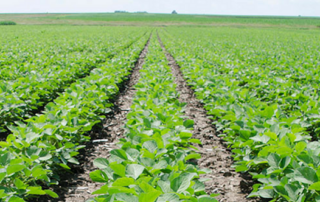

 and then
and then